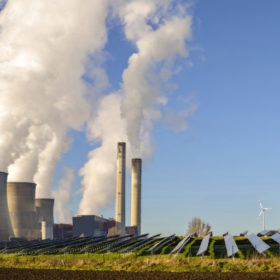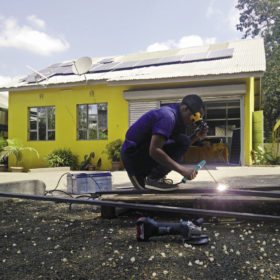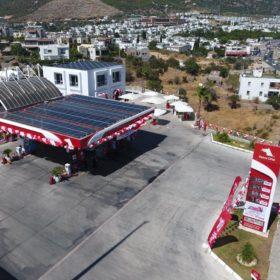UK’s Labour announces plans for 22 GW of new solar capacity by 2030
Although PV trails wind and nuclear in terms of its anticipated future footprint, the opposition party’s attempt to outflank left of center rivals on climate change has resulted in one of the world’s most ambitious national roadmaps towards a zero-carbon future.
Bangladeshi solar mini grids threatened by fossil fuel commitments
In racing to provide access to electricity to all its citizens, the government has commissioned extensive coal, gas and nuclear generation capacity and the solar sector fears an ever-expanding national grid will kill the business case for solar in previously off-grid areas.
Energy access for Puerto Ricans after Hurricane Maria
In this op-ed for pv magazine, Roy Torbert and José Juan Terrasa-Soler, of the Rocky Mountain Institute and Resilient Power Puerto Rico, respectively, analyze the cost of Puerto Rico’s energy recovery and the role that microgrids play in reconstruction and resiliency.
The weekend read: A bump in the road for pay-as-you-go solar and self-sustainability
Two high-profile bankruptcies this year could serve as a warning for the potential pitfalls of pay-as-you-go and small scale, off-grid solar. However, Marcus Wiemann and David Lecoque of the Alliance for Rural Electrification say such business models can lead to long-term success and have a key role to play in providing power to the 1 billion people throughout the world who still live without electricity.
An oasis of PV
A new study shows solar may help reduce water pumping costs in a desert oasis of Mauritania significantly while reducing water losses. Researchers claim PV water pumping may also help prevent desertification.
World Bank: Nigeria’s mini-grid sector set to boom
A World Bank presentation in London drew an encouraging picture for the Nigerian market by explaining why the mini grid segment will take off in the next 12 months.
Turkey’s net-metering: Will commercial, residential or municipal lead the way?
Turkey introduced net metering in May, stoking hopes the scheme could add meaningful volumes of new solar generation capacity. Municipal governments elected in the spring can also boost the program’s success, provided the many layers of authority can work together, that is.
Solar supporting peacekeeping in DR Congo
A report by the Powering Peace organization states UN missions in the Democratic Republic of Congo could reduce expense and pollution by using off-grid solar to power operations instead of diesel generators. Adding a 200 kW solar system with 200 kW/450 kWh of energy storage would reduce diesel consumption 80% for 10-year savings of almost $2.6 million, states the group.
Bangladesh government pledges rooftop PV on all its buildings
The authorities expect to add 300 MW of rooftop solar in the next four years thanks to net metering regulations and hope the nation’s extensive clothing and textile industry will be encouraged to adopt PV.
India prepares to embrace agrivoltaics
Take-up has been slow considering the nation’s mammoth agricultural industry but, as a packed session on the topic at the recent Renewable Energy India show illustrated, attitudes may be changing in a nation which is already installing solar greenhouses.










